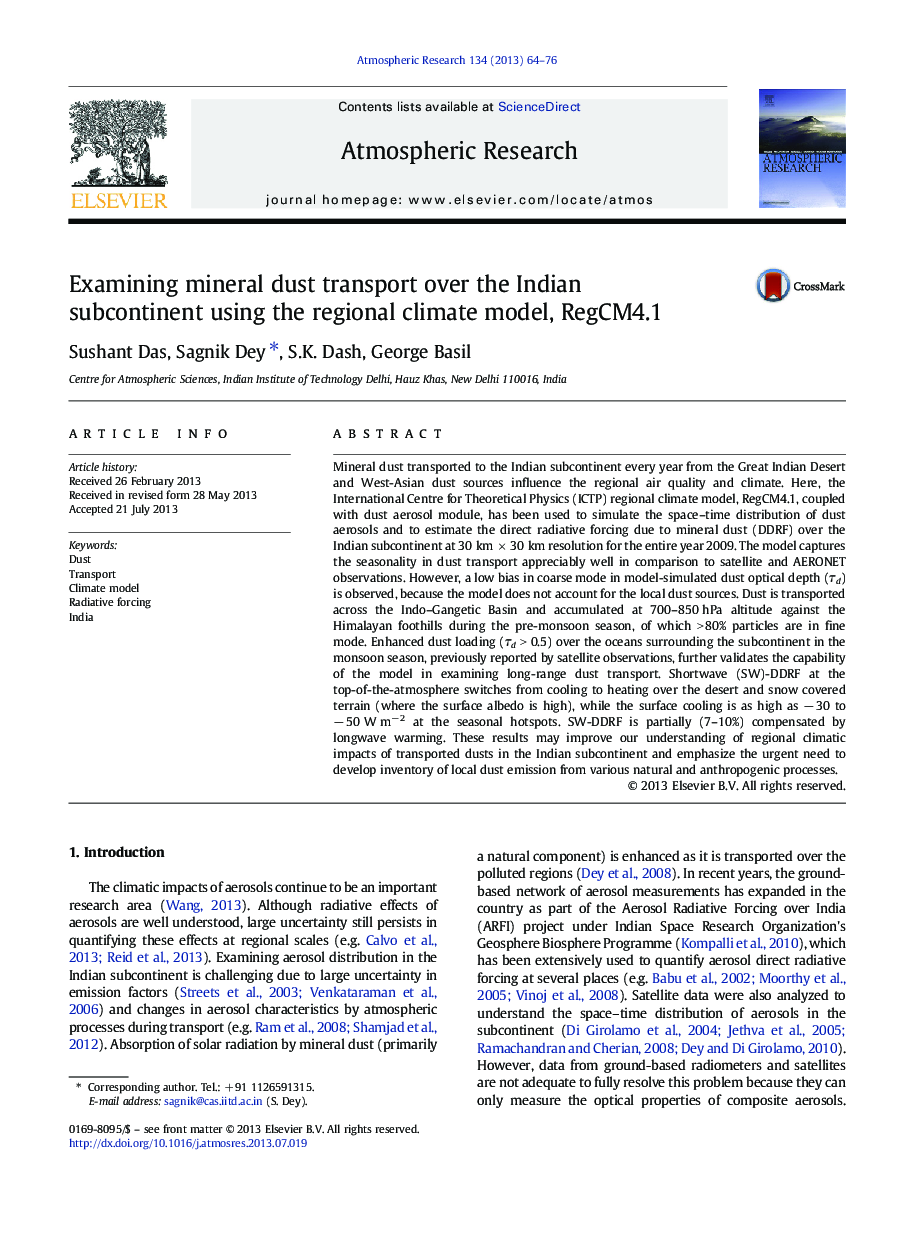| کد مقاله | کد نشریه | سال انتشار | مقاله انگلیسی | نسخه تمام متن |
|---|---|---|---|---|
| 4449986 | 1620535 | 2013 | 13 صفحه PDF | دانلود رایگان |

• Mineral dust transport over India is simulated by regional climate model.
• The model captures the seasonality of dust transport appreciably well.
• Dust is transported at 700–850 hPa across the Indo–Gangetic Basin.
• > 80% dust accumulated against Himalayan foothills is in fine mode.
• SW surface DRF efficiency varies between − 50 to − 70 W m− 2 per unit dust optical depth.
Mineral dust transported to the Indian subcontinent every year from the Great Indian Desert and West-Asian dust sources influence the regional air quality and climate. Here, the International Centre for Theoretical Physics (ICTP) regional climate model, RegCM4.1, coupled with dust aerosol module, has been used to simulate the space–time distribution of dust aerosols and to estimate the direct radiative forcing due to mineral dust (DDRF) over the Indian subcontinent at 30 km × 30 km resolution for the entire year 2009. The model captures the seasonality in dust transport appreciably well in comparison to satellite and AERONET observations. However, a low bias in coarse mode in model-simulated dust optical depth (τd) is observed, because the model does not account for the local dust sources. Dust is transported across the Indo–Gangetic Basin and accumulated at 700–850 hPa altitude against the Himalayan foothills during the pre-monsoon season, of which > 80% particles are in fine mode. Enhanced dust loading (τd > 0.5) over the oceans surrounding the subcontinent in the monsoon season, previously reported by satellite observations, further validates the capability of the model in examining long-range dust transport. Shortwave (SW)-DDRF at the top-of-the-atmosphere switches from cooling to heating over the desert and snow covered terrain (where the surface albedo is high), while the surface cooling is as high as − 30 to − 50 W m− 2 at the seasonal hotspots. SW-DDRF is partially (7–10%) compensated by longwave warming. These results may improve our understanding of regional climatic impacts of transported dusts in the Indian subcontinent and emphasize the urgent need to develop inventory of local dust emission from various natural and anthropogenic processes.
Journal: Atmospheric Research - Volume 134, 1 December 2013, Pages 64–76